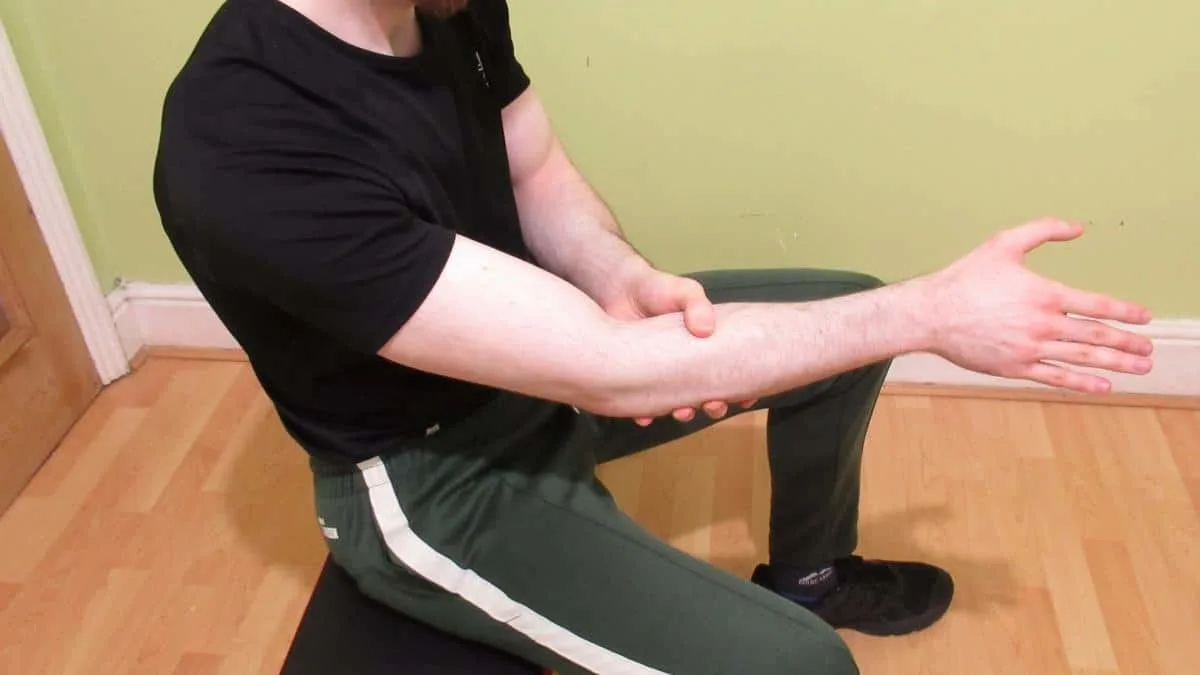We use the forearm in so many tasks during our everyday lives that sooner or later, we’re bound to get tight forearm muscles that reduce our ability to perform our usual activities.
So in this guide, we’re going to learn about the possible causes for tight forearms, the symptoms that you might experience beyond the tightness, and how you can go about treating your discomfort.
Related post: forearm pain when doing bicep curls
Symptoms of tight forearms
If your forearm feels tight, then you might experience restricted movement in the wrist joint, among other symptoms. This section covers each side effect in more detail.
Reduced flexibility
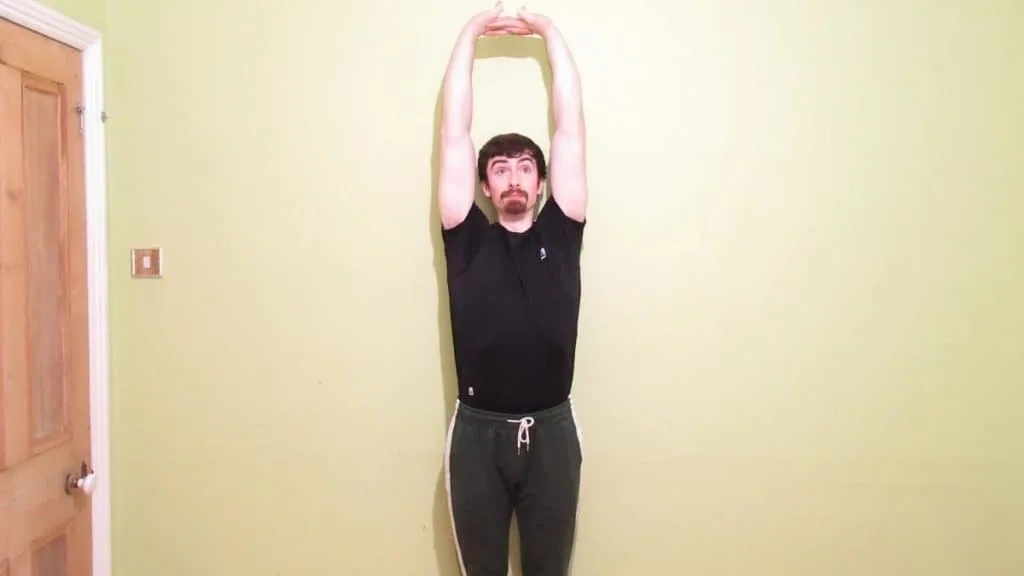
When a muscle becomes tight, such as during resistance training, it’s because the muscle tissue usually has a higher presence of lactic acid in the blood. This influx of toxins restricts the movement of your muscles because the lactic acid limits their ability to contract.
This process leads to a tight forearm muscle.
Naturally, you might have less range of motion (ROM) at the wrist joint because of all the lactic acid in your forearm flexors and extensors. This is actually very common if you perform a lot of work on the computer because, as you’ll learn later on, typing involves repetitive contraction of the fingers and forearm, which can cause tightness. [1]
Cramping
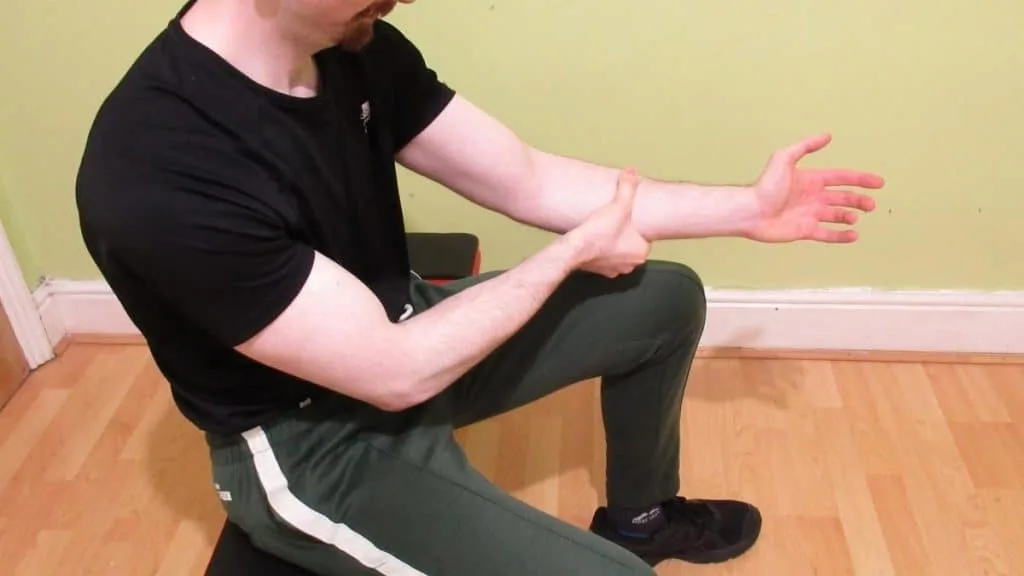
You may experience cramping in forearms if you use your lower arms for extended periods of time without taking a break. Cramping and tightness are somewhat synonymous, but cramping is essentially tightness that hasn’t been treated (i.e., an intense bout of tightness).
Your forearms might feel pumped—as if you’d just performed resistance training. It may also feel like your muscles are knotting up and need some kind of relief, which we’ll discuss in the treatment section in just a minute.
Pain
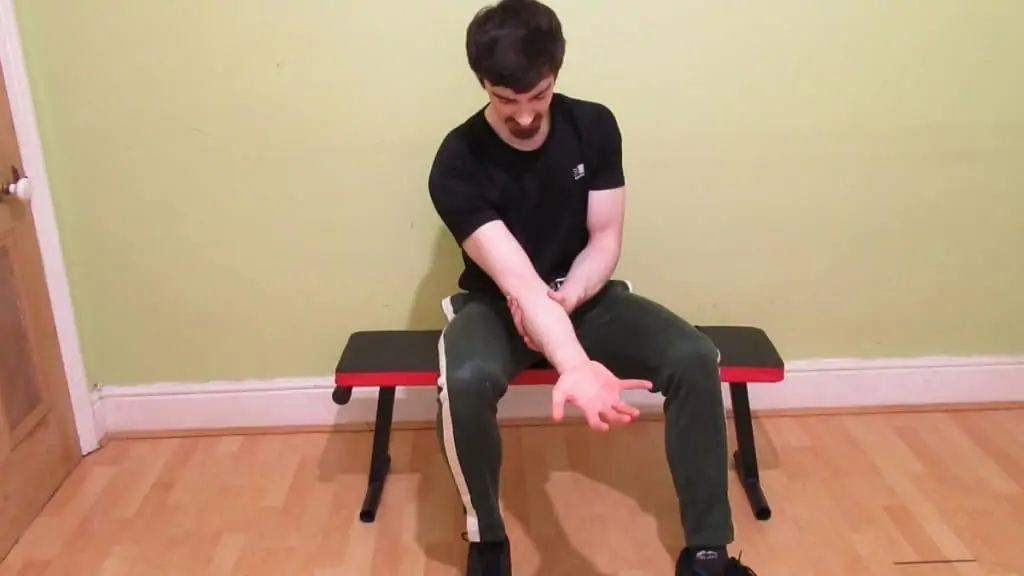
Pain is one of the major forearm strain symptoms because the muscle is no longer just fatigued; it’s actually injured or torn. Also, if you experience forearm pain while gripping, then it could be a sign of a more severe issue such as tendonitis.
The key is to distinguish between acute lower arm tightness and that which arising as a symptom of a more serious injury. That’s why it’s always best to talk with your doctor since they’ll be able to identify the cause of your discomfort by performing tests on you in person.
Why does your forearm feel tight?
If your forearm feels tight, then you’re probably not giving your limb sufficient rest, and/or you’re performing repeated contractions without any kind of stretching. Still, there are specific activities that are often responsible for people’s discomfort.
Excessive use of technology
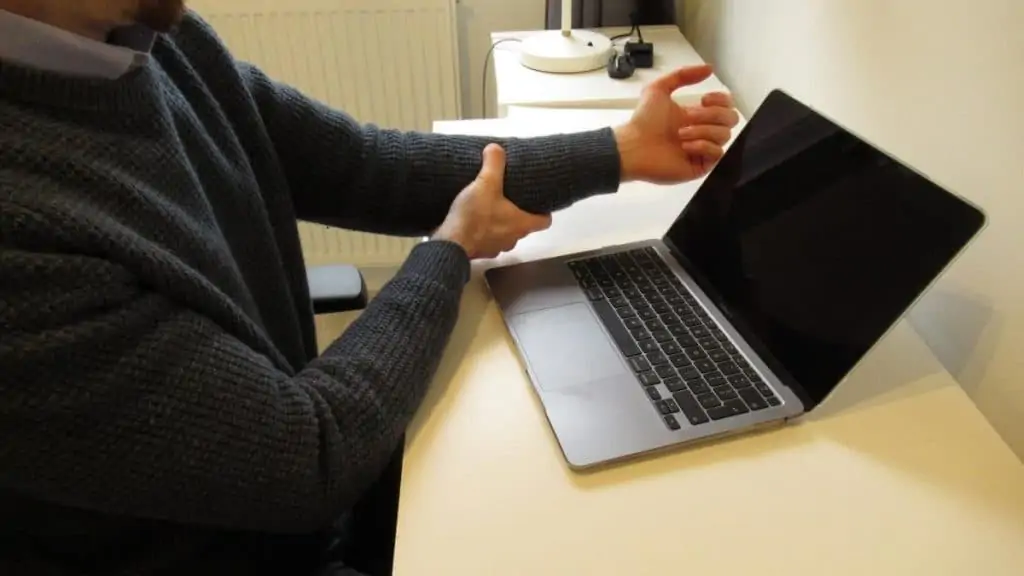
If you have pain in your forearm from typing, it could well be due to a more severe conditional like carpal tunnel syndrome. But if you feel a tightness in the belly of the muscle, then it may simply be because you aren’t taking sufficient breaks from the computer.
When you type on a keyboard or scroll on a touch screen device, you’re performing repeated finger contractions, which like exercise, causes a muscle to become fatigued and thus tight.
Also, since many of the forearm muscles actually insert into the hands and fingers, it’s not surprising that repetitive motions involving the fingers can actually result in tight forearm flexors and extensors.
This is why many people experience forearm pain due to gaming. The forearms aren’t exactly getting a workout, but the small finger muscles are always active.
Manual labor

While manual labor such as welding, digging, and farming are great ways to strengthen the forearms, they’re also a common cause of lower arm tightness.
This may be due to under-recovery. If you use your forearms more than usual in a given day and don’t rest enough between bouts of work, then your lower arms may begin to feel knotted up.
You can also get painful forearms from fibromyalgia, which is a common side effect of that unfortunate condition.
Lack of recovery from exercise
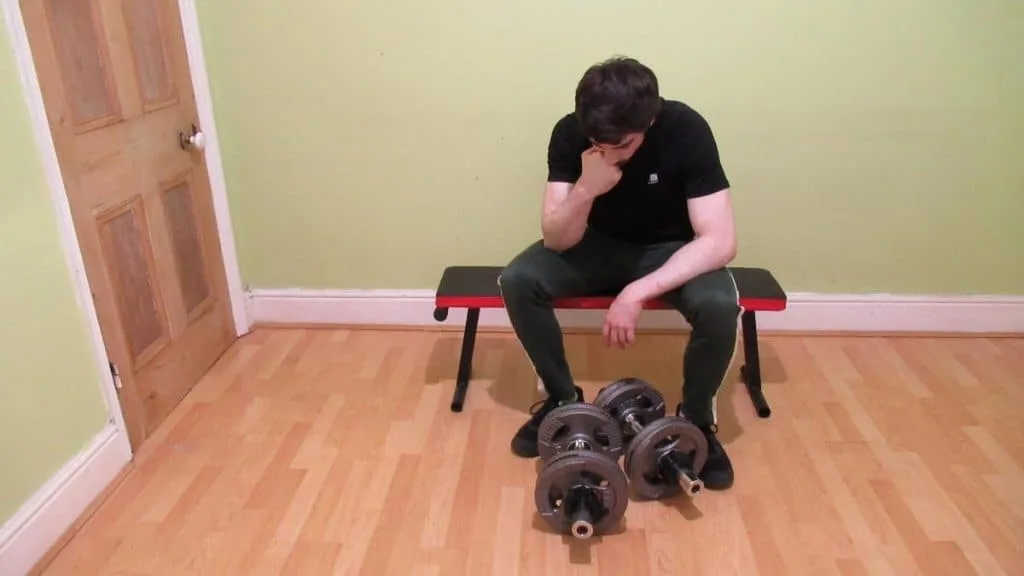
The forearms are active during virtually every upper body resistance exercise, especially those movements, such as deadlifts and rows, where the lower arms are actually pivotal to maintaining a firm grip on the bar.
So even if you’re not training your forearms directly, they can still become tight due to all of the gripping (which is to say contracting) that they’re doing.
Of course, if you have particularly intense forearm pain from weight lifting, then it could also be a sign of something more serious because quite a few lifters get forearm splints from working out since they lift weights that are too heavy.
Specifically, you may get sore forearms from the rowing machine or any other kind of exercise where your forearms are heavily involved in the movement.
Injury
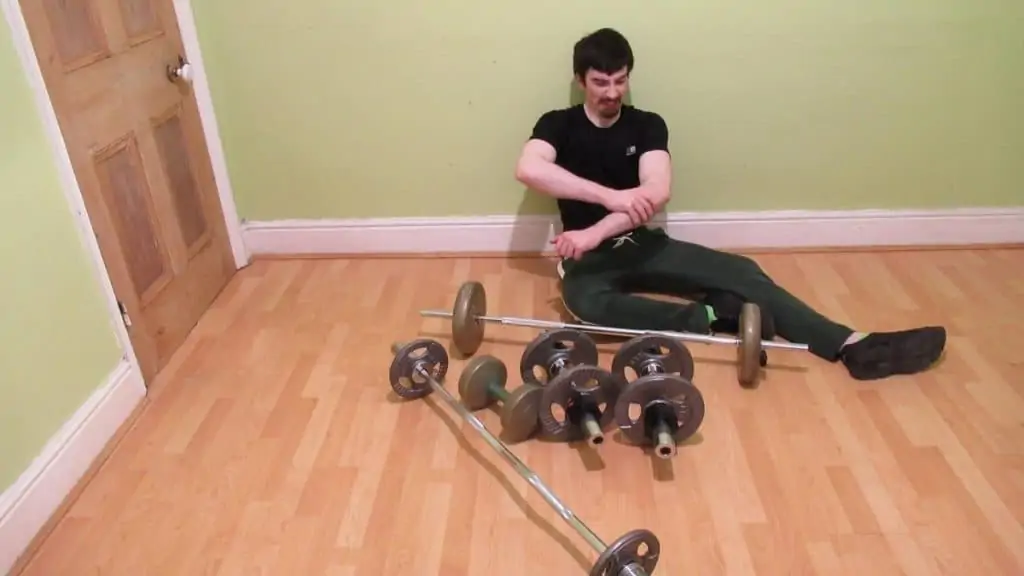
While tight forearms and hands are often easy to explain and treat, they can also be a sign of injuries that require medical treatment. [2] If your discomfort doesn’t disappear after your usual exercise recovery time, after performing manual labor, or any other activity, then talk with your doctor.
Related post: forearm rehab drills
How can you treat tight forearm muscles?
If you have a tight forearm muscle, then you can loosen up your limb with these 3 techniques. Note that some will work better than others depending on your biomechanics and available space and equipment.
Stretching

Stretching is the traditional way to relieve tight forearms, and it’s one of the most effective (see our best forearm stretches guide) because you’re balancing out those repeated contractions that occur when you train at the gym or work on the computer.
Let’s start with the underside of the forearm, the flexors. I prefer to stand up for this stretch, but if you’re at work, then you can also do it sat down.
Begin by raising one arm out in front of you, elbow completely locked out. Then, raise your hand so that your palm is facing forward, like you’re waving to someone. Now, with your free hand, gently pull the fingers of your working hand backward. Hold this stretch for 15-30 seconds and repeat 1-3 more times.
To stretch the extensors, the muscles that sit on top of your forearm, perform this drill in reverse.
Again, begin by raising your arm out in front of you. This time, however, you want to flex your wrist and put your hand down so that your palm is facing you. Then, with your other hand, gently pull your fingers towards you. Hold this position for 15-30 seconds and do it 1-3 more times.
Foam rolling
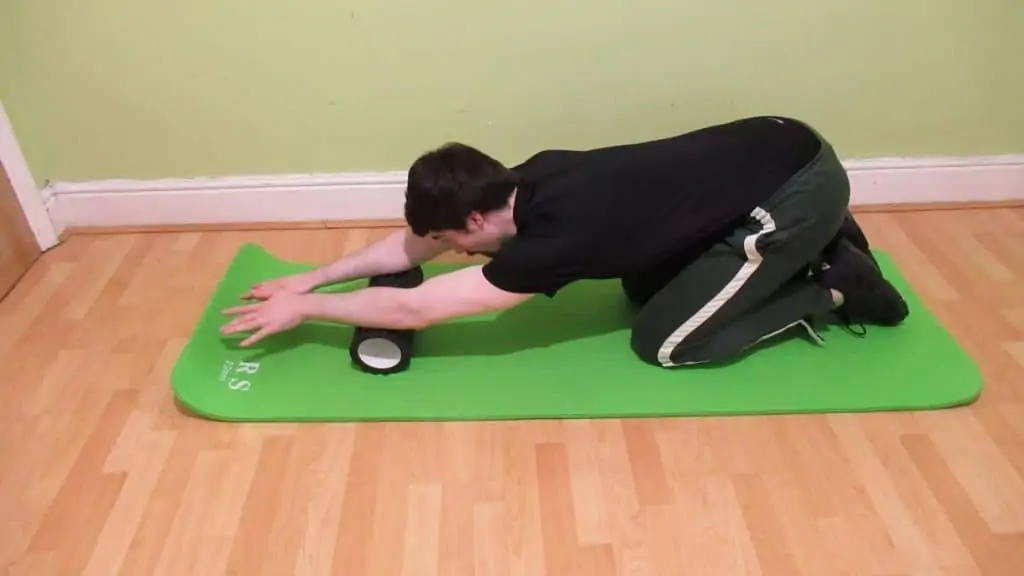
Foam rolling your forearm with a dedicated foam roller or lacrosse ball (my choice) can help to reduce tightness by loosening up the fascia of the muscle. It’s a popular recovery method among athletes who experience muscle tightness from exercise and competition. [3]
However, for some people, foam rolling can feel intense and even a bit painful if they’ve never tried it before. That’s why I prefer to use a simple lacrosse ball—you get to dictate the amount of tension to exert.
You don’t need much tension to relieve a tight forearm muscle. Just make sure to roll the ball up and down your arm in circles and then apply a bit more pressure wherever you feel the most tightness.
Of course, if you have a more serious problem like brachioradialis pain and swelling, then you can try Rest, Ice, Compression, and Elevation (RICE) before you start your rehab program.
Self-massage
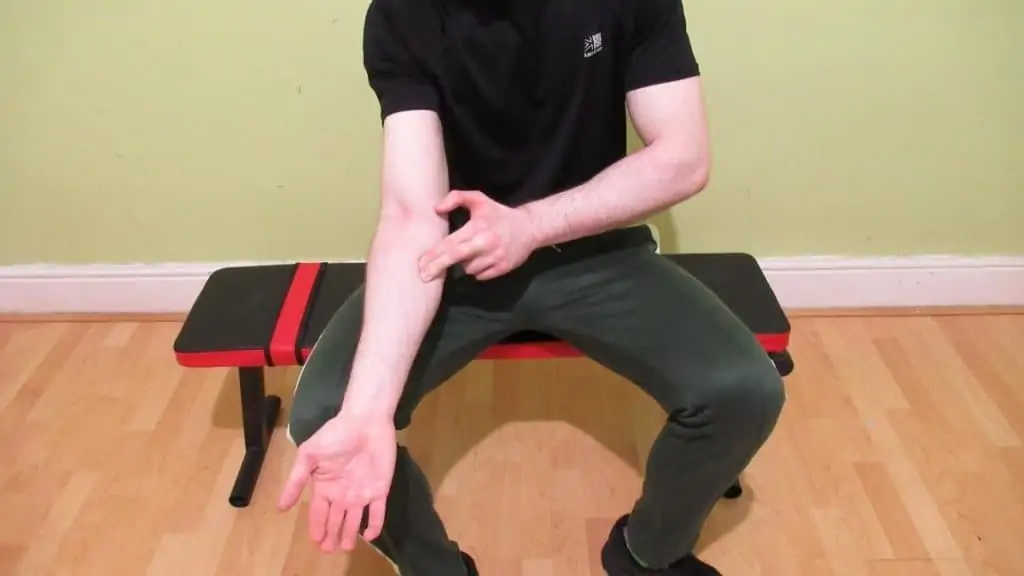
If you don’t have access to a foam roller or similar massage equipment, then you can simply use your opposite hand to perform self-massage. The principle is virtually the same. You use your fingers to apply some pressure on your opposite forearm and find the tight areas.
However, since you’re applying the pressure with your opposite arm, you may actually cause the arm that’s doing the work to become even tighter. So I just prefer using simple massage tools like the lacrosse ball so that I don’t have to exert as much pressure.
Read more: forearm pain from doing pull ups
Conclusion: How to get rid of tight forearms
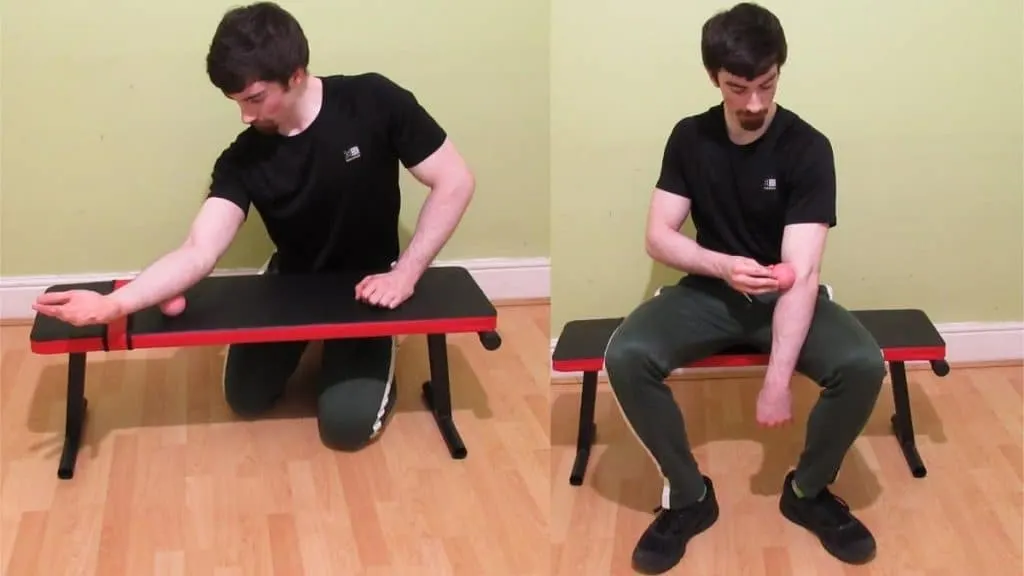
Since tight forearms can often be a side effect of intense exercise and repetitive motions such as typing and DIY, a tight forearm muscle can often cure itself with sufficient rest.
You can also try stretching the affected area and implementing various massage techniques to loosen up the fascia of the muscle tissue even more.
But if neither protocol relieves your tight forearm muscles, then be sure to seek advice from a medical professional because your discomfort could be a symptom of a more serious condition.
References
- Bhimani, R. H., Gaugler, J. E., & Skay, C. (2017). Understanding symptom experiences of muscle tightness from patients’ and clinicians’ perspectives. Journal of Clinical Nursing, 26(13–14), 1927–1938. https://doi.org/10.1111/jocn.13506
- Jimenez, A., & Marappa-Ganesha, R. (n.d.). Forearm Compartment Syndrome. StatPearls Publishing.Howell, J. N., Chleboun, G., & Conatser, R. (1993). Muscle stiffness, strength loss, swelling and soreness following exercise-induced injury in humans. The Journal of Physiology, 464(1), 183–196. https://doi.org/10.1113/jphysiol.1993.sp019629

